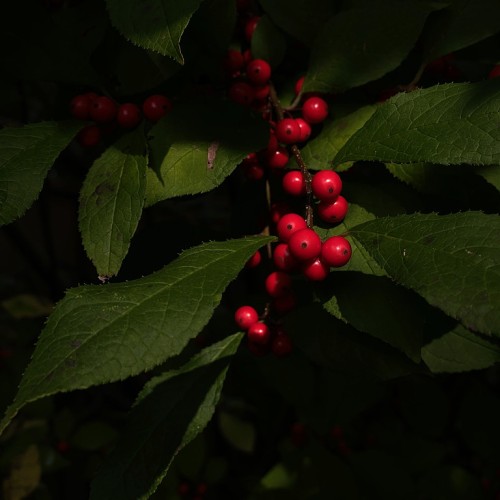
winterberry
Ilex 'Sparkleberry'
Cycle:
Perennial
Watering:
Frequent
Hardiness Zone:
5 - 9
Flowers:
Flowers
Sun:
Full sun,part shade
Fruits:
Fruits Ready In Fall
Edible:
Yes
Leaf:
Yes
Growth Rate:
Low
Maintenance:
Low
Salt Tolerant:
Yes
Care Level:
Medium
watering
Winterberry (Ilex 'Sparkleberry') needs to be watered deeply and thoroughly when the soil is dry to the touch, usually once or twice per week. Make sure to check for moisture first because overwatering may be harmful. Water the plant slowly and evenly until moisture is seen coming out of the bottom of the pot. The drainage should be adequate and you should never allow your winterberry to sit in standing water. Winterberry prefers light soils that are moist, yet well-drained, so adding a bit of compost or organic matter to increase drainage is a good idea.
sunlight
Winterberry (Ilex 'Sparkleberry') requires full sun for at least 6 hours each day for optimal flowering and fruiting. The plants will still survive and produce some flowers and fruits if they receive partial sunlight, but the quality of the fruit will not be as good. Winterberry plants benefit from additional direct sunlight during the summer months and can tolerate extreme cold temperatures during the winter. However, too much direct sun during the winter or in the heat of summer can cause sunscald on unprotected plants.
pruning
Winterberry plants (Ilex 'Sparkleberry') need to be pruned twice a year for optimal health and performance. Prune lightly in late winter, when the plant is still dormant, and again in midsummer after the plant has finished flowering. When winter pruning, remove any dead or broken branches, and prune out any branches that are crossing or rubbing against each other. Aim to make the winterberry plant look like a vase or a lollipop, with a single leader (or main stem) extending up from the base. When pruning in the summer, prune to shape the overall plant and remove any spent flowers. To maintain a bushy and full plant, you can pinch off the tips of vigorous branches and remove any inward growing branches to encourage outward growth. Winterberry is highly tolerant of pruning, so don't be afraid to be bold when pruning. The goal is to maintain a healthy, attractive shape.
